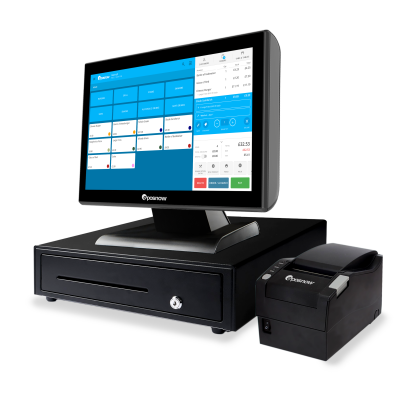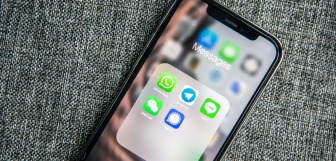What is SMS Marketing: A Complete Guide
Whether you're hosting an opening to launch your new boutique or completely revamping your restaurant's takeout menu, one thing's for sure. You want customers to know about it and come check it out.
But how do you reach them? How do you make sure they see your message?
Enter SMS marketing.
With 5 billion people worldwide using short messaging services or SMS every day [1], it's no wonder that businesses are turning to this channel to reach their customers. SMS marketing is a way to send promotional or transactional messages to your customers via text message.
What is SMS Marketing?
SMS or text message marketing is a form of direct marketing that allows businesses to send promotional or transactional messages to their customers via text.
The great thing about SMS marketing is that it's an opt-in marketing channel, meaning your customers have to sign up to receive your messages. This helps to ensure that they're interested in what you have to say and not being bombarded with unwanted texts.
You can do this in two ways: by sending a bulk message or an A2P message.
What is Bulk SMS Marketing?
Bulk SMS marketing is a form of SMS marketing that allows businesses to send a bulk text message to their opted-in contacts.
What is A2P SMS Marketing?
A2P SMS marketing is a form of SMS marketing that allows businesses to send text messages to their customers via an application-to-person (A2P) gateway.
Benefits of SMS Marketing
There are a lot of reasons why businesses choose to use SMS marketing, but here are some of the most popular benefits:
- It's personal: Text messages are personal by nature, which helps to create a connection with your customers.
- It's immediate: Unlike other marketing channels like email or social media, text messages are read almost immediately after they're received.
- It's interactive: SMS marketing allows you to create two-way conversations with your customers.
- It's cost-effective: SMS marketing is one of the most affordable marketing channels available.
- It's measurable: With SMS marketing, you can track metrics like open rate and click-through rate to see how your campaigns are performing.
Gain all the advantages of a POS system with detailed, flexible, downloadable reports, and so much more:
- Manage and update products quickly with easy to use software
- Expand your business into multiple channels and integrate with a variety of online platforms
- Manage multiple locations and salespoints with multi-site management
- Keep queues short with streamlined, modifiable sales processes
- Choose a setup that suits you with software and hardware options

How to Use SMS Marketing
There are a few different ways to use SMS marketing, but the most common are:
- Promotional messages: These are messages that promote a product or service. They can include things like discounts, new arrivals, or special offers.
- Transactional messages: These provide information about a transaction, like an appointment reminder or shipping notification.
- Customer service: You can use SMS to communicate with your customers about their account, an order they placed, or any other customer service issue.
SMS Marketing Tools You Can Use
Now that you know what SMS marketing is and how it can benefit your business, it's time to start planning your first campaign. But before you do, you'll need to choose marketing software to help you manage your contacts and create your messages. These include:
- SMS marketing platforms: These platforms provide a way to manage your contacts and create your SMS campaigns.
- Short code providers: Short codes are 5 or 6-digit numbers that allow customers to opt in to your SMS marketing campaigns.
- SMS marketing services: These services provide a way to send and receive SMS messages, but they typically don't offer the same features as an SMS marketing platform.
Seven Simple Steps to Getting Started
1. Choose your goals
The first step is to decide what you want to achieve with your SMS marketing campaign. Do you want to increase sales, drive traffic to your website, or improve customer retention? Once you know what your goals are, you can start planning your campaign.
2. Choose your target audience
Next, you need to identify who you will send your SMS messages to. This will help you determine your market size, what kind of content to include in your messages, and what type of offers will be most relevant to your audience.
3. Choose your offer
Once you have your target audience and keywords figured out, it's time to create an offer that will entice customers to sign up for your SMS marketing campaign. This could be a discount, free shipping, or a special offer.
4. Set up your campaign
Now that you have all the pieces of your SMS marketing campaign in place, it's time to set it up. This involves creating the opt-in process, designing your messages, and setting up a schedule for sending your texts. Ask yourself questions like:
- When is the best time to send sms marketing messages?
- What’s the best day of the week?
- How often should you send them?
- What design will work best for your offer?
5. Test your campaign
Before you launch your campaign, it's essential to test it out to make sure everything is working correctly. Send a few text messages to a small group of people and see how they respond. This will help you catch any problems before you launch your campaign to the masses.
6. Launch your campaign
Once you've tested your campaign and everything is working properly, it's time to launch it! Start sending out your texts and see how your customers respond.
7. Measure your results
Once your campaign is up and running, tracking your results is crucial so you can see how well it's performing. Look at metrics like opt-in rate, click-through rate, and conversion rate to see how your campaign is doing by using popular marketing software like Callfire.
SMS Marketing Tips to Try
1. Add an engaging Call to Action (CTA).
Your CTA is what will prompt people to take action on your SMS marketing campaign. Make sure it's clear and concise so people know exactly what you want them to do. Power words like "free," "now," and "act fast" are often used in CTAs to create a sense of urgency.
2. Remember time zone differences
When you're sending SMS marketing messages, it's important to remember that people in different time zones will receive your message at different times. This is something you need to take into consideration when you're scheduling your messages. You don't want to send a message at the wrong time of day and risk people not seeing it.
3. Personalise your messages.
Another great way to improve your SMS marketing campaign is to personalise your messages. This could mean adding the recipient's name in the message or sending them a message that is relevant to their interests. Personalised messages are more likely to be opened and acted on than generic messages.
4. Use emojis
Emoji are a great way to add personality to your SMS marketing messages. They can also help you convey a message without using a lot of words. Emoji are especially popular with Gen Zs and millennials, so they can be a great way to reach this demographic.
5. Send exclusive offers
People love getting exclusive offers and deals. You can use this to your advantage by sending exclusive offers to people who sign up for your SMS marketing campaign. This could be a discount code or a special offer that is only available to people on your list.
Real-World Examples:
Papa John's
Pizza franchise company Papa John's wanted to reach a large number of people with their new pizza offer. So, they devised a text message reading, "Any Pizza, any size, including our massive 16″ – £6.99 collection or £8.99 delivery". They sent this SMS to approximately 8100 contacts who opted-in.
The campaign was a success, with the franchisees overall sales increasing by 33% throughout the three-week campaign. Franchise Operator Grant Wiszniewski explained how ecstatic he was with the campaign's performance and the huge ROI (ROI) [2].
Kiehl's
Kiehl's, a cosmetic company, had two opt-in methods for their SMS marketing campaign.
After signing up online or texting "KIEHLS" to 25787, customers then agreed to share their location with Kiehl's. This allowed the company to send up to three location-based text alerts 3x a month with offers.
The company found that 73% of customers who signed up for the SMS marketing campaign made a purchase, and 81% of respondents to a survey sent out after the pilot program recalled receiving SMS marketing messages from Kiehl's [3].
Final Thoughts
So there you have it. Everything you need to know about SMS marketing. By following the tips in this guide, you'll be well on your way to running a successful SMS marketing campaign. Remember to keep your messages relevant, personalised, and engaging, and you'll be sure to see great results.
Good luck and happy marketing!
Find out how our system can help your business grow. Get in touch with one of our experts below.




